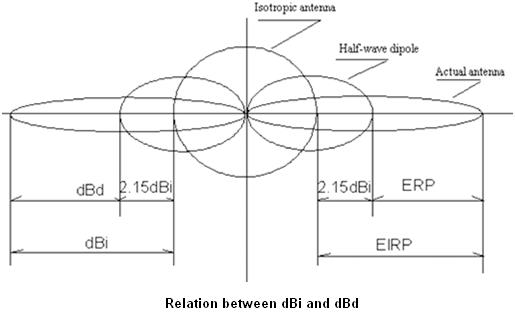All about Antennas. What is, How Works, How Many Types.
Here I write about antenna which include what is antenna, How it works, Antenna classification, Specifications of antenna, Working Band and what is antenna gain other than this about antenna I will write next.
What is Antenna
Antenna is a device which converts an electric wave guided by a conductor into a free-space, unguided
electromagnetic wave, and vice versa. Electrical energy is fed to the antenna via a transmission line, a conductor which passes electrical energy from one point to another. A matching device is usually required to ease the abrupt transition between the guided and the free wave. The wave guided by the line is radiated into space by the antenna.
Antenna Classification
There are dozens of antenna types and variations of each. The type of antenna selected for use depends on the propagation characteristics required.
Frequency
Antennas can be classified as single-band antennas (narrow-band antennas), wide-band antennas, dual-band antennas, triple-band antennas, etc
Directivity
Antennas can be omnidirectional, sector or directive. Omni-directional antennas radiate roughly the same pattern all around the antenna in a complete 360° pattern. The most popular types of omnidirectional antennas are the dipole and the ground plane. Sectorial antennas radiate primarily in a specific area. The beam can be as wide as 180 degrees, or as narrow as 60 degrees. Directional or directive antennas are antennas in which the beamwidth is much narrower than in sector antennas. They have the highest gain and therefore used for long distance coverage. Types of directive antennas are the Yagi, the biquad, the horn, the helicoidal, the patch antenna, the parabolic dish, and many others.
Main Specifications of Antenna
The technical specifications of antenna include:
- Work band
- Gain
- Polarization mod
- Beam width
- Preset down tilt
- Down tilt mode
- Adjustable range of down tilt
- Front-to-rear ratio
- Side lobe suppression ratio
- Zero point filling
- Echo loss
- Power capacity
- Impedance
- Third order intermodulation
The mechanical specifications of antenna include:
- Dimensions
- Weight
- Number Input ports
- Port connector type (e.g. N or DIN)
- Wind load
Work Band
It is the work band of LTE system. Many vendors are offering generally antenna product of the following frequency band:
- 806-960MHz (FDD 850MHz, 900MHz)
- 1710-2170MHz (FDD 1800MHz, 2100MHz, AWS and TDD Band 33-37, Band 39)
- 2300-2700MHz (TDD Band 38/40 and FDD 2.6G)
- 824-960/1710-2180MHz (Dual Band)
- 2300-2700/2300-2700MHz (for 4T4R MIMO)
Antenna Gain
The antenna is a passive device. It can neither strengthen the signal nor transmit signal by itself. It concentrates the power to a direction by changing the combination of oscillators and changing the feeder mode. Gain is a key index for antenna, standing for the capability of concentrating the power to a direction. There are usually two units for antenna gain: dBi and dBd. The relationship between the two units is as the following equation:
0 dBd = 2.15 dBi
dBi: the capability of concentrating power by actual directional antenna (including omnidirectional) compared with the isotropic antenna. The i in dBi means isotropic.
dBd: the capability of concentrating power by actual directional antenna (including omnidirectional) compared with half-wave dipole antenna. The d in dBd means dipole.
The antenna gain is relevant to the number of oscillator units, horizontal and vertical beamwidth.
